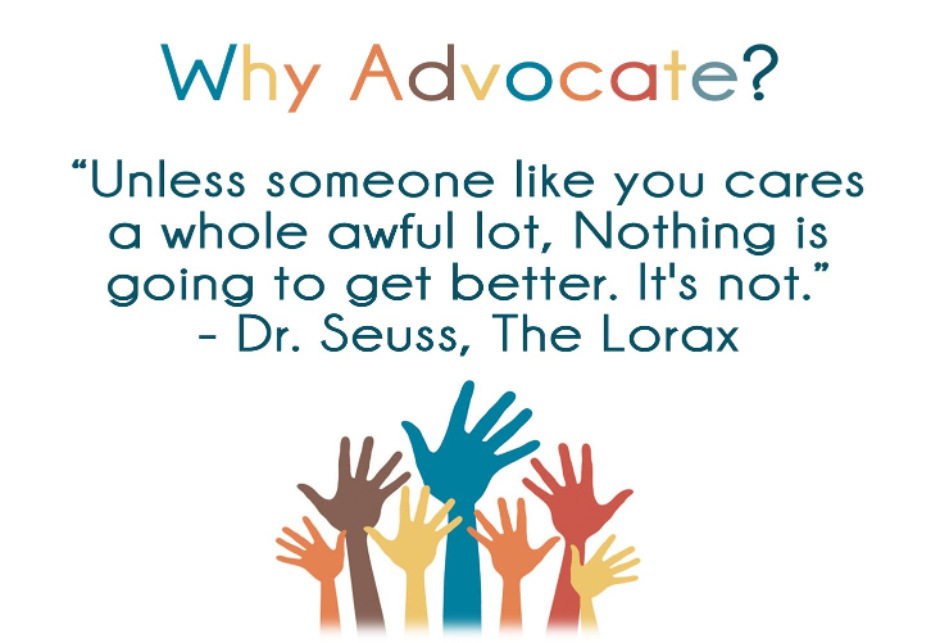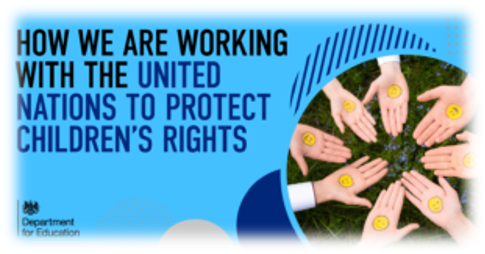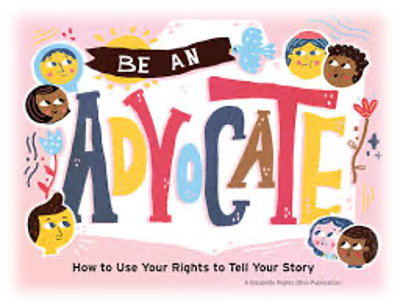
Advocacy allows people to fight for equity in service delivery to all citizens. Children have equal rights as adults. However, most institutions create systemic barriers that prevent children from enjoying their fundamental rights. This report focuses on how respective practitioners can advocate for children’s rights to promote care, education, health, and welfare. Besides, it details how the Early Years Foundation Stage (EYFS) involves advocacy initiatives. Because multiple institutions participate in enhancing child development, practitioners should adopt collaborative approaches to create enabling environments for children to enjoy equity.
Advocacy
Advocacy is an important initiative that allows people to speak out on behalf of someone to achieve equity. Advocacy is the deliberate evidence-based process to directly or indirectly influence decision-makers, stakeholders, and relevant audiences to support and implement actions supporting women’s and children’s rights (UNICEF 2010, p. 3; Small & Limber 2002, p. 52). Advocates deliver evidence-based recommendations to influence decisions that affect minority groups in society. Advocates target groups lacking the legal, social, or cultural ability to fight for equal rights. Advocacy is essential to seeking change in governance, attitudes, power, social relations, and institutional functions (UNICEF 2010, p. 3). Such initiatives are instrumental in addressing more profound underlying barriers to fulfilling children’s fundamental rights. Besides, advocacy allows people to address imbalances, inequity, and disparities, promote rights, create healthy environments, and further democracy opportunities by enhancing children’s participation (UNICEF 2010, p. 3). Effective advocacy initiatives allow all children to access quality education despite their cultural, social, or cultural backgrounds. The long-term benefits include enhanced participation in political, social, and economic processes in their adulthood (Miller n.d., p. 2; Pardeck & Pardeck 2006, p. 146). Hence, advocacy involves deliberate actions to create an enabling environment to promote children’s rights and empower them to become responsible citizens.

Advocacy in practice
EYFS involves advocacy initiatives to safeguard children. Early years providers must find appropriate explanations for appropriate actions where there are safeguarding concerns about children in the event of an allegation against a staff member (HM Government 2018, p. 62). The EYFS stakeholders must establish appropriate policies and guidelines to protect children. Besides, they must strive to justify safeguarding actions to protect children from possible exploitation by teachers or other staff members. The National Health Service (NHS) organizations and agencies are legally responsible for identifying welfare needs or safeguarding concerns regarding individual children and providing the necessary support (HM Government 2018, p. 62; The National Archives 2021, para. 14). These duties ensure children learn in dynamic environments that enhance their welfare and health needs. NHS should engage parents and children in understanding appropriate ways to improve their health outcomes. The United Nations Convention on the Rights of the Child (UNCRC) participation rights focus on enabling children to take part in countless activities and relationships and engage in group activities like playing games, digging ponds, acting, learning, cooking, and caring for other people and animals (Alderson 2000, p. 79; Robson 2016, p. 7). Advocators should strive to establish policies to ensure that children participate in various activities that enhance knowledge acquisition. Hence, advocacy is crucial to ensure children acquire knowledge in a safe and healthy environment through active participation.
Care

Practitioners can advocate for children’s rights regarding care through collaborative initiatives to create awareness and enhance competency. A wide range of health practitioners have an ethical and legal duty to safeguard and promote the welfare of children (HM Government 2018, p. 63). Health practitioners should take a multi-disciplinary approach to ensure that children remain healthy and safe in their learning settings. Besides, they should participate in disseminating the necessary information to parents and children to promote overall health. NHS and clinical commissioning groups must advocate for health and eliminate possible barriers to children’s general welfare (HM Government 2018, p. 63). These stakeholders must enhance access to public health among children. Besides, they should create policies that improve access to primary healthcare.
Education
Practitioners should establish policies that allow children to enjoy the constitutional right to education. According to Whisker and Oakley (2020), the Education Act of 1944 made state education accessible for all children (p. 38). Practitioners should ensure that all children access quality education regardless of their economic, social, cultural, or religious backgrounds. The Children Act 2004 amended the Children Act 1989 to establish policies to allow different organizations responsible for children to coordinate their work (Whisker & Oakley 2020, p. 40; Department of Education 2021, p. 8; Children Act 2004 2023, para. 4). The practitioners in the education sector should collaborate to eliminate barriers to accessing quality learning. Besides, practitioners should strive to create an enabling learning environment and promote literacy levels among young children.

Health
Practitioners should develop policies to ensure all children, even those with disabilities, access appropriate health services. Disabled children across the United Kingdom (UK) experience disproportionate effects of inadequate resourcing and lack of additional support or equal access to services (Children’s Commissioners of the United Kingdom of Great Britain and Northern Ireland 2020, p. 22). The key stakeholders should work to develop policies that enhance equal access to available health services. Stakeholders should promote the inherent right to life, as stipulated in UNCRC Article 6, using appropriate health policies (United Nations n.d., p. 4; Nolan n.d., p. 6). In this case, stakeholders should create policies that channel appropriate and adequate resources to allow children access to proper health services.
Welfare
Practitioners should participate in promoting children’s development and welfare. Rights concerning development and welfare include a child’s right to a reasonable standard of living and health and essential services, social security, education, and leisure (Walker 2011, p. 2; Vandenhole 2019, p. 23). Different stakeholders should collaborate to establish policies promoting children’s welfare in learning institutions. The UNCRC articles 2 and 3 compel state parties to adopt policies that promote equality and are in children’s best interest (United Nations n.d., p. 4; UNICEF 1989, p. 1). The policies adopted should demonstrate the willingness to promote children’s overall sound. States parties should ensure that institutions, services, and facilities responsible for children’s care or protection conform to the standards established by competent authorities (United Nations n.d., p. 4). This observation implies that practitioners should collaborate with state parties to standardize their policies and practices in safeguarding children’s interests.
In addition, practitioners should create an enabling environment for children to form and express their views freely. UNCRC’s Article 12 grants children a legal right to access the opportunity to express their opinions in any judicial and administrative proceedings that affect them directly or indirectly (United Nations n.d., p. 5; Lansdown 2011, p. 24). Stakeholders should strive to eliminate possible barriers to institutional policies that hinder children from expressing their thoughts. Such initiatives should focus on administrative policies adopted by learning institutions to ensure that they instill and promote the right to expression.
Conclusion
Advocacy initiatives ensure that children access and enjoy their fundamental rights. Stakeholders in the education and health sectors should participate in creating supportive policies that allow children to enjoy equal rights. Such initiatives will ensure that children access similar care, education, health, and welfare irrespective of their cultural, social, and religious backgrounds or physical abilities.
Reference List
Children’s Commissioners of the United Kingdom of Great Britain and Northern Ireland 2020, Report of the Children’s Commissioners of the United Kingdom of Great Britain and Northern Ireland to the United Nations Committee on the rights of the child.
United Nations Children’s Fund (UNICEF) 2010, Advocacy toolkit: A guide to influencing decisions that improve children’s lives.
Alderson, P 2000, ‘Children’s participation rights’, in Young children’s rights: Exploring beliefs, principles, and practice, Jessica Kingsley Publishers, London, pp. 78–110.
Children Act 2004 2023, Legislation.gov.uk, viewed 23 April 2023, <https://www.legislation.gov.uk/ukpga/2004/31/schedule/4>.
Department of Education 2021, Statutory framework for the early year’s foundation stage: Setting the standards for learning, development, and care for children from birth to five.
HM Government 2018, Working together to safeguard children: A guide to inter-agency working to safeguard and promote the welfare of children.
Lansdown, G 2011, Every child’s right to be heard: A resource guide on the UN committee on the rights of the child general comment no.12, Save the Children UK.
Miller, D n.d., ‘The scope of Social Justice’, in Principles of social justice, Harvard University Press, pp. 1–20.
Nolan, A n.d., Children’s rights and the law in a time of Coronavirus.
Pardeck, JT & Pardeck, JA 2006, ‘Advocacy and children’s rights’, in Children’s rights: Policy and practice, The Haworth Press, Binghampton, Ny, pp. 145–182.
Robson, J 2016, Early years teachers and young children’s rights: The need for critical dialogue, University of East London.
Small, M & Limber, SP 2002, ‘Advocacy for children’s rights’, Cambridge University Press eBooks, Cambridge University Press, pp. 51–75.
The National Archives 2021, ‘The Cabinet papers | Origins of the NHS’, Nationalarchives.gov.uk, vol. 1, no. 1.
UNICEF 1989, The United Nations Convention on the Rights of the Child.
United Nations n.d., The United Nations Convention on the Rights of the Child.
Vandenhole, W 2019, ‘Children’s rights and sustainable development from a “Law and Development” perspective’, Children’s Rights and Sustainable Development, pp. 12–30.
Walker, G 2011, ‘Children’s rights: Social justice and exclusion’, in Children’s rights in practice, Sage, Los Angeles Etc.
Whisker, D & Oakley, MW 2020, ‘The discourse of advocacy and participation: Children’s voices, children’s rights’, in Working with vulnerable children, young people, and families, Routledge, pp. 34–51.
 write
write